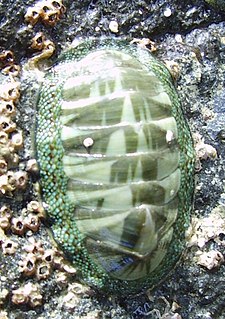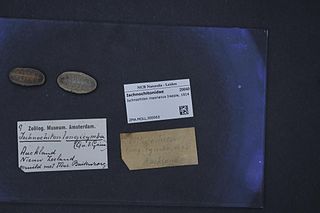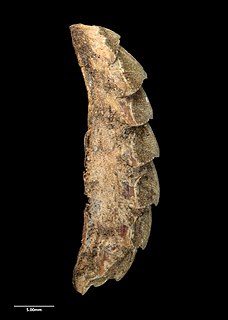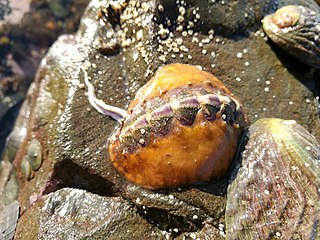 W
WCallochiton crocinus is a species of chiton or "sea cradle" in the family Callochitonidae. It occurs on the shores of the Australia-New Zealand region. Locally, it is known as "smooth chiton", but that name is elsewhere applied to other species.
 W
WChiton glaucus, common name the green chiton or the blue green chiton, is a species of chiton, a marine polyplacophoran mollusk in the family Chitonidae, the typical chitons. It is the most common chiton species in New Zealand. Chiton glaucus is part of a very primitive group of mollusc with evidence of being present in up to 80 million years of the fossil record.
 W
WIschnochiton maorianus, sometimes called the variable chiton, is a fast moving species of chiton in the family Ischnochitonidae, endemic to the main islands of New Zealand where it is abundant.
 W
WNotoplax mariae is a species of chiton in the family Acanthochitonidae.
 W
WNotoplax rubiginosa is a species of chiton in the family Acanthochitonidae, native to New Zealand. The species grows to 18 millimetres (0.71 in) long and 10 millimetres (0.39 in) wide. N. rubiginosa is known as the most common chiton from the Plio-Pleistocene in fossil records of New Zealand.
 W
WNotoplax violacea is a species of chiton in the family Acanthochitonidae, endemic to all coasts of New Zealand, where it is common in northern areas.
 W
WOnithochiton neglectus neglectus is a subspecies of chiton in the family Chitonidae. This subspecies is endemic to New Zealand, being mostly found at the East Coast of the North Island and the South Island. O. neglectus neglectus is a brooding chiton, which means that the eggs develop attached to the body of females.
 W
WPlaxiphora biramosa is an uncommon chiton in the family Mopaliidae, endemic to New Zealand.
 W
WPlaxiphora obtecta is a large chiton in the family Mopaliidae, endemic to New Zealand, where it is most often found on the West Coast of the North Island. It is called Haka-hiwihiwi by some Māori and was likely a food source.